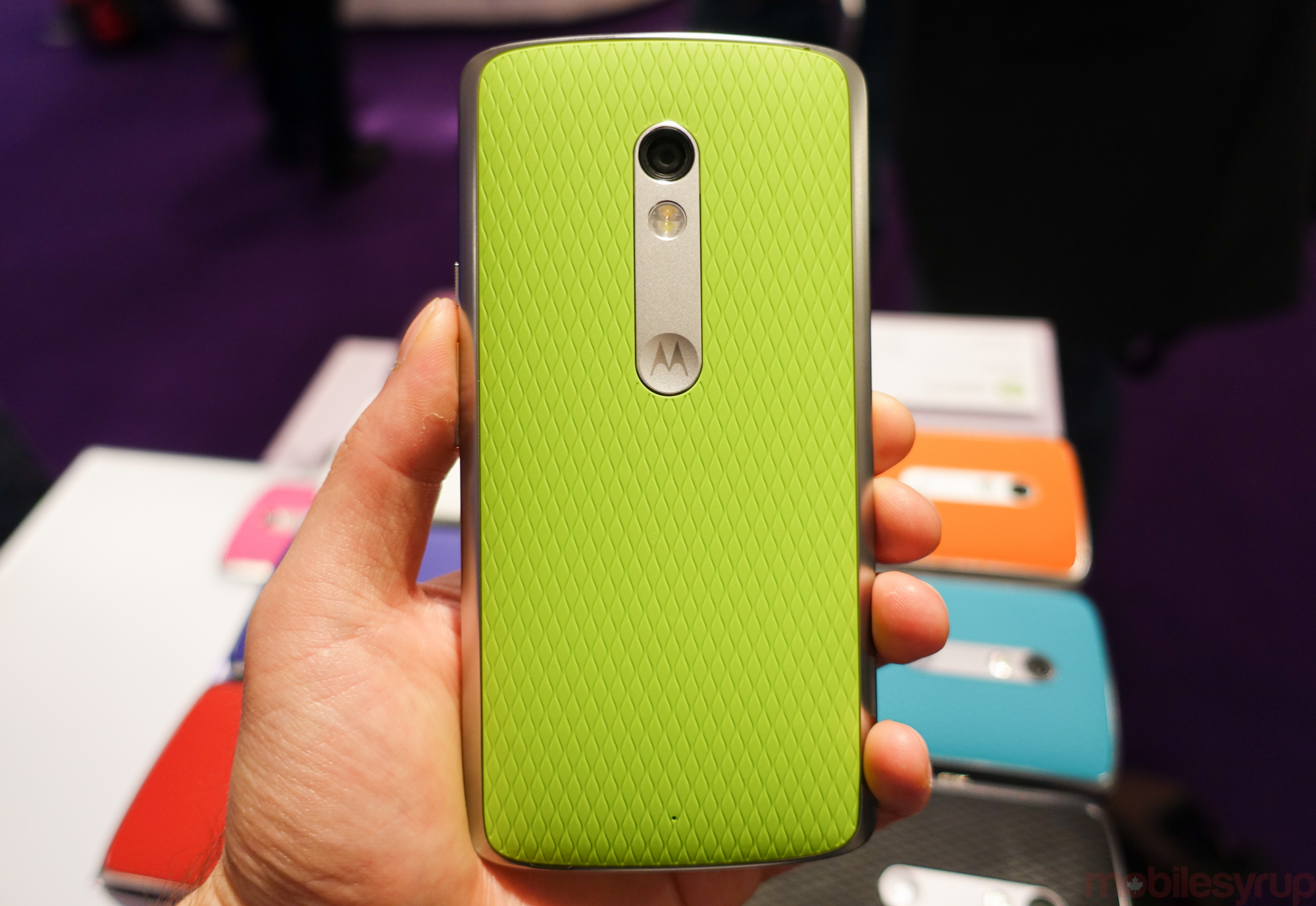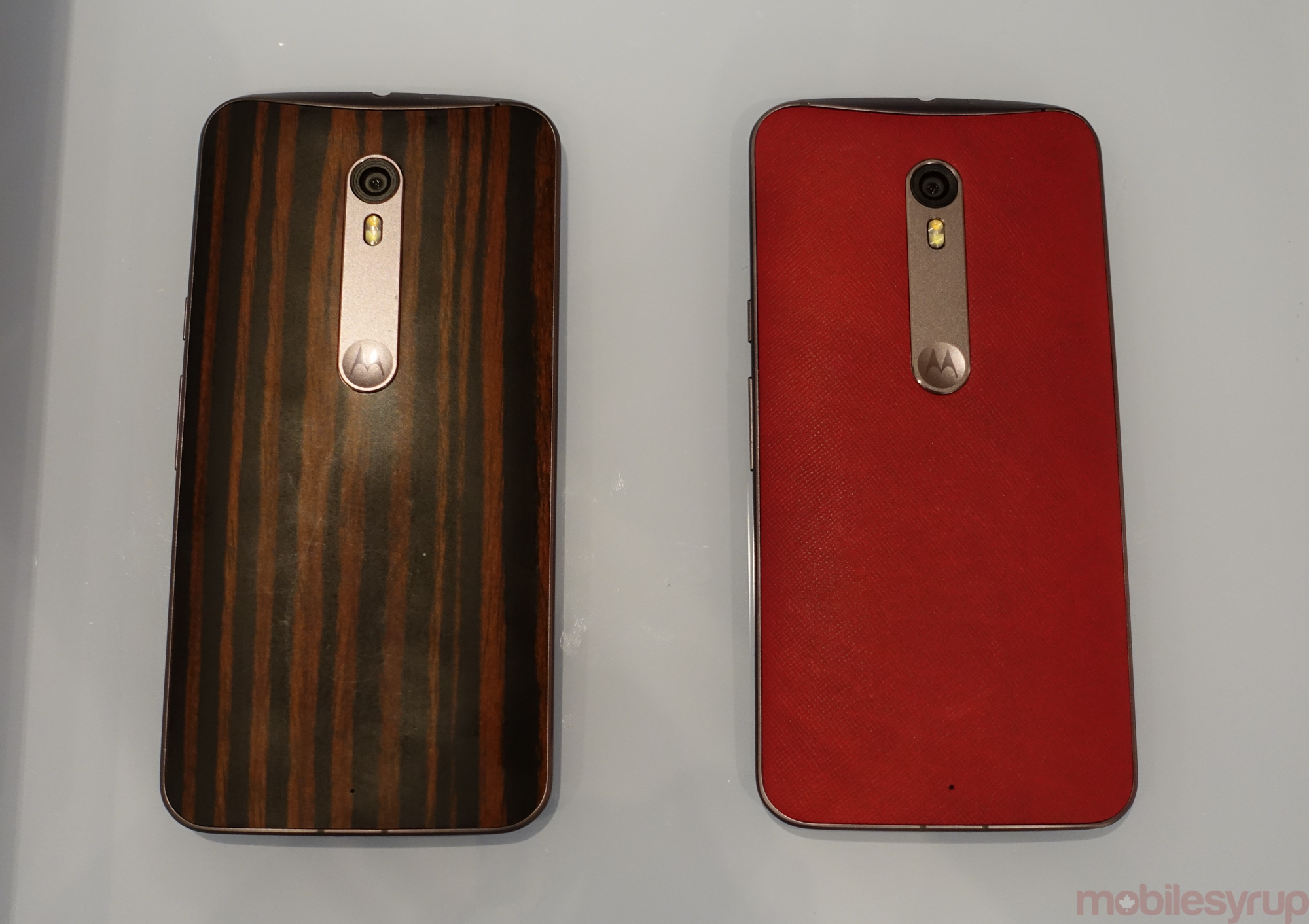
Motorola today unveiled two new Moto X devices, the first time it has done so since the line debuted in 2013.
Differentiated by more than price and performance, the Moto X Style and Moto X Play are, well, playing to different markets, with the former not even broaching Canada and the latter arriving at several Canadian carriers in August.
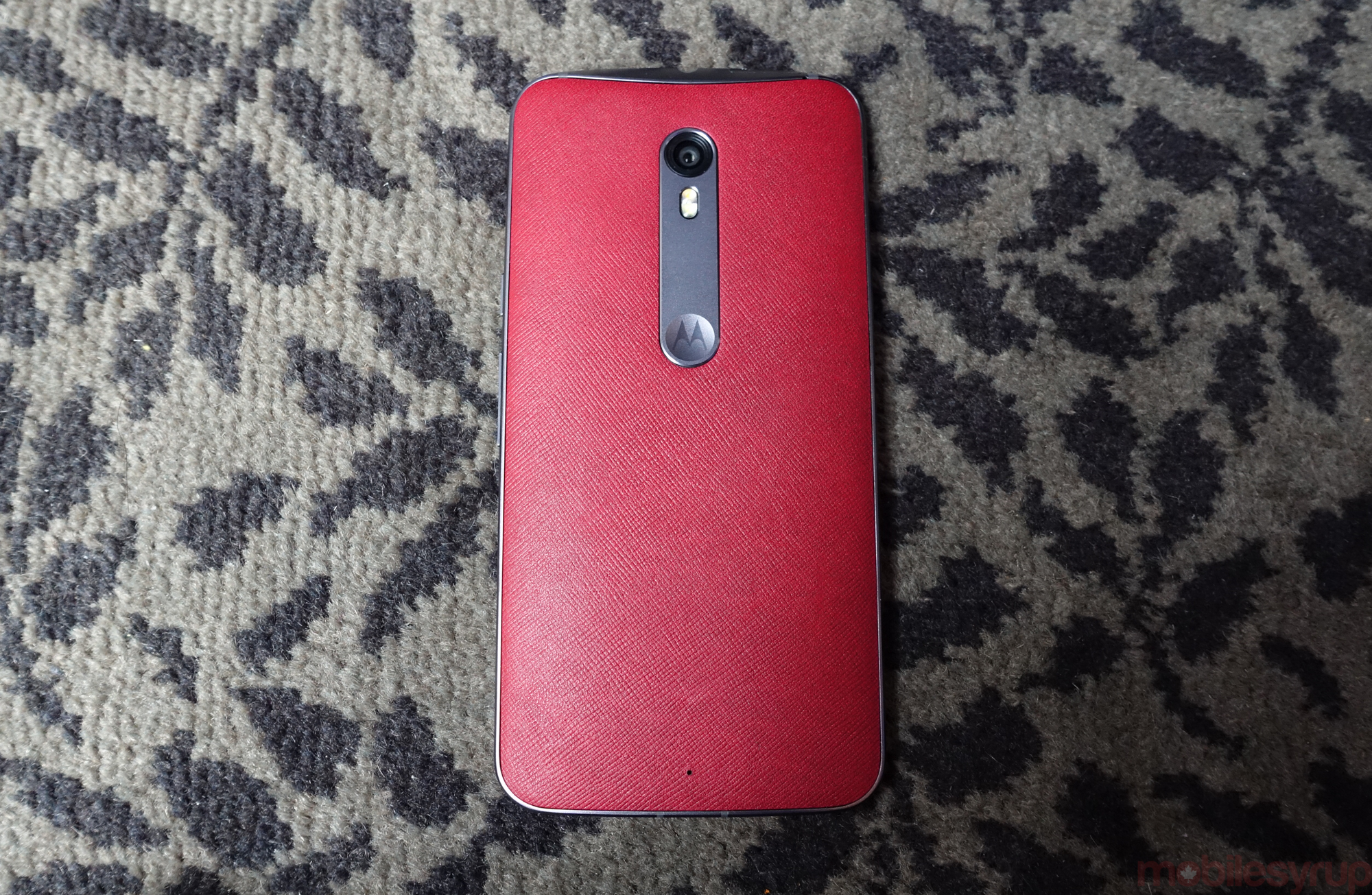
Moto X Style
We’ll start with the Moto X Style, which is arguably the better phone. Canadians will be upset to know that its 5.7-inch QHD panel and 21MP shooter are going to be absent this September, since it also offers specs, such as an octa-core Qualcomm Snapdragon 808 chip and 3GB of RAM, that rival many flagships from Samsung and LG today.
The Style resembles the 2014 Moto X in many ways, but is taller and considerably heftier, at 179 grams. But that weight indicates a density that is absent from many devices debuting this year, and its incredibly high screen to bezel ratio makes it one of the most compact phablets I’ve ever seen. The screen, too, is beautiful, full of rich colours and excellent viewing angles to go along with its 520ppi pixel density.
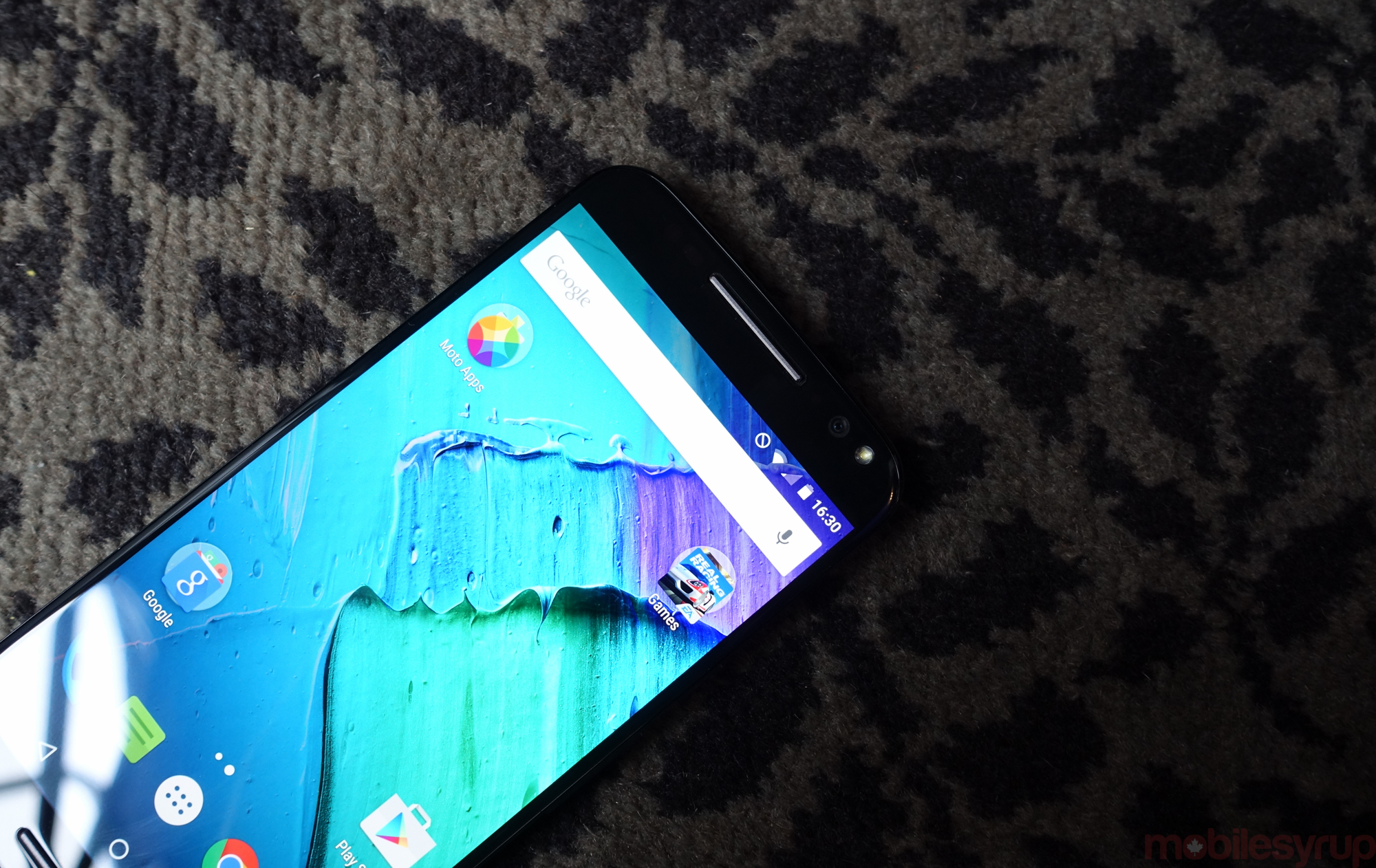
As a successor to last year’s Moto X, the Style certainly has enough improvements to check most of the requisite boxes. Its camera has been upgraded to a 21MP sensor and F2.0 lens that, though it lacks optical image stabilization, was voted by DxOMark as the second-best mobile camera on the market behind the Samsung Galaxy S6. Its phase-detection autofocus is really the only improvement over the Moto X Play in the camera department, though the upgraded image signal processor inside the Snapdragon 808 helps smooth out grain and other details in post-processing.
The 3,000mAh battery inside Moto X Style is also a 30% boost over the 2014 Moto X, which should address one of major pain points we experienced last year, the other being the camera.
Without knowing if the Moto X Style is coming to Canada, it’s difficult to say with certainly whether it’s better than any of the current flagships on the market, but that it shares many of the aspects of the LG G4 and Galaxy S6 that make them so great, while improving dramatically on the Moto Assist experience we’ve come to so appreciate alongside the near-stock software, makes it a very compelling product.
Moto X Play
The Moto X Play is coming to Canada, and its existence is both confusing and encouraging. Last year, Rich Osterloh, Motorola’s President, talked about how the company uses the X line to test and perfect technologies before bringing them to lower-cost products like the Moto G and E. With this year’s Moto G largely making up for lost time, combining LTE, an all-day battery, an excellent camera and most, if not all, of the company’s excellent software tweaks, what room does a $400 Moto X have in the market?

In truth, the Moto X Play attempts to appeal to the same users as the Moto G. Motorola failed to position the two previous Moto X models as true high-end devices, and they sold poorly as a result.
The Moto X Play is the flagship for the everyman, coming in at $400 outright while maintaining the X branding and carrier positioning Motorola has been trying to cement for years.
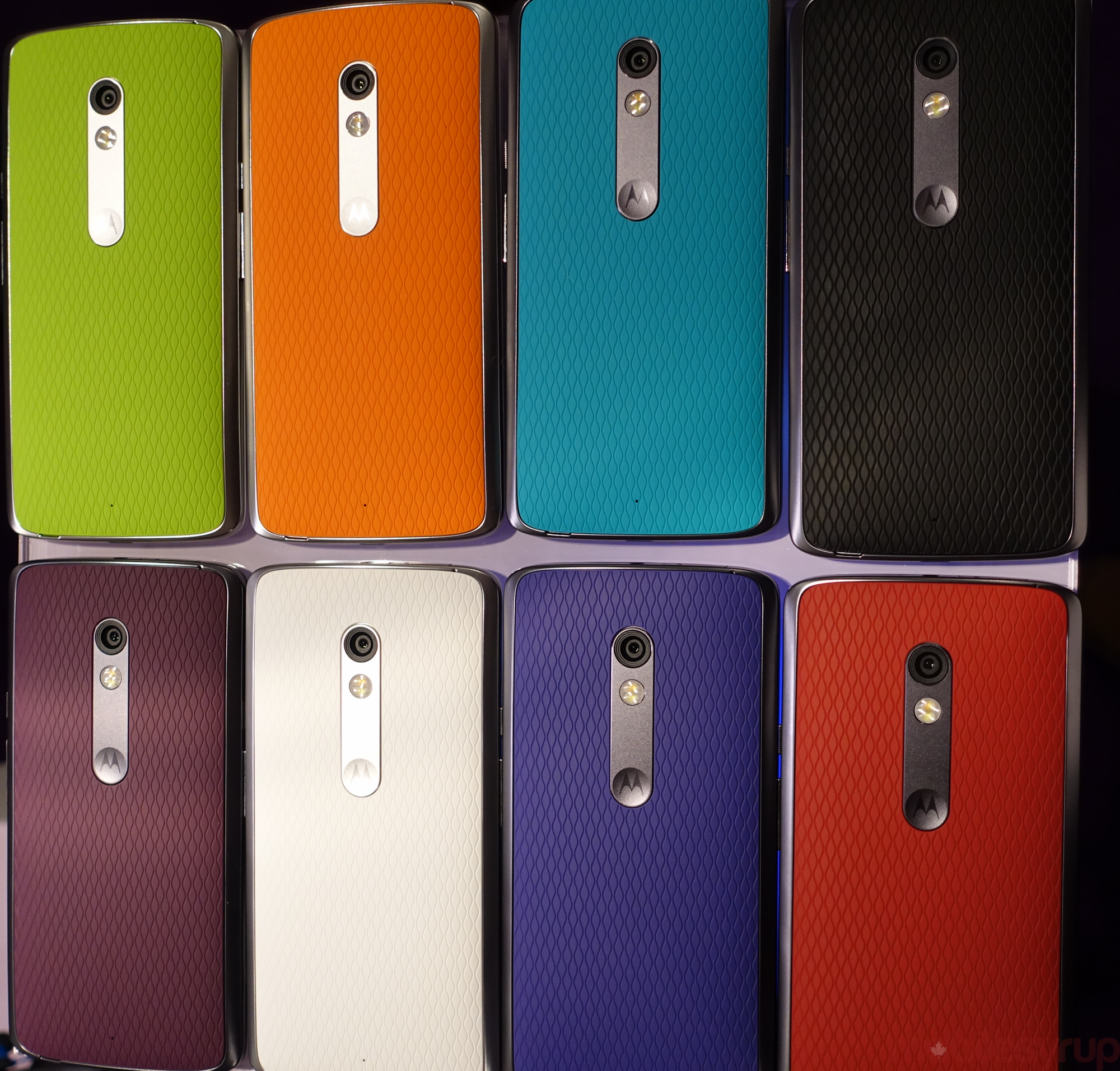
When you pick up the Play, it’s clear that it is a very close kin to the Moto X 2014, from the curved sides to the placement of the buttons and SIM slot. But to accommodate the enormous battery it is 25 grams heavier and nearly one millimetre thicker.
The 5.5-inch 1080p display is, while identical on paper, improved over the Galaxy S4-era panel in last year’s model, while the 64-bit Snapdragon 615 SoC is, though less powerful on paper, an adequate replacement for the Snapdragon 801. This year’s panel is LCD, like the Style’s, instead of OLED like last year’s Moto X. While it’s unclear how this will be affect battery life when compared with Moto Display, the upside is that the panel is much more accurate and vivid.
That discontinuity — moving from an 800-series Snapdragon to a 600-series one — is not going to win Motorola any new fans in with the hardcore consumer, but it speaks to the market the Play is targeting, an increasingly savvy consumer base hyper conscious of price. The base model, which comes with 2GB of RAM and 16GB of internal storage, can be augmented with expandable memory up to 128GB, but it’s unfortunate that Motorola is not fighting the status quo in any way here.
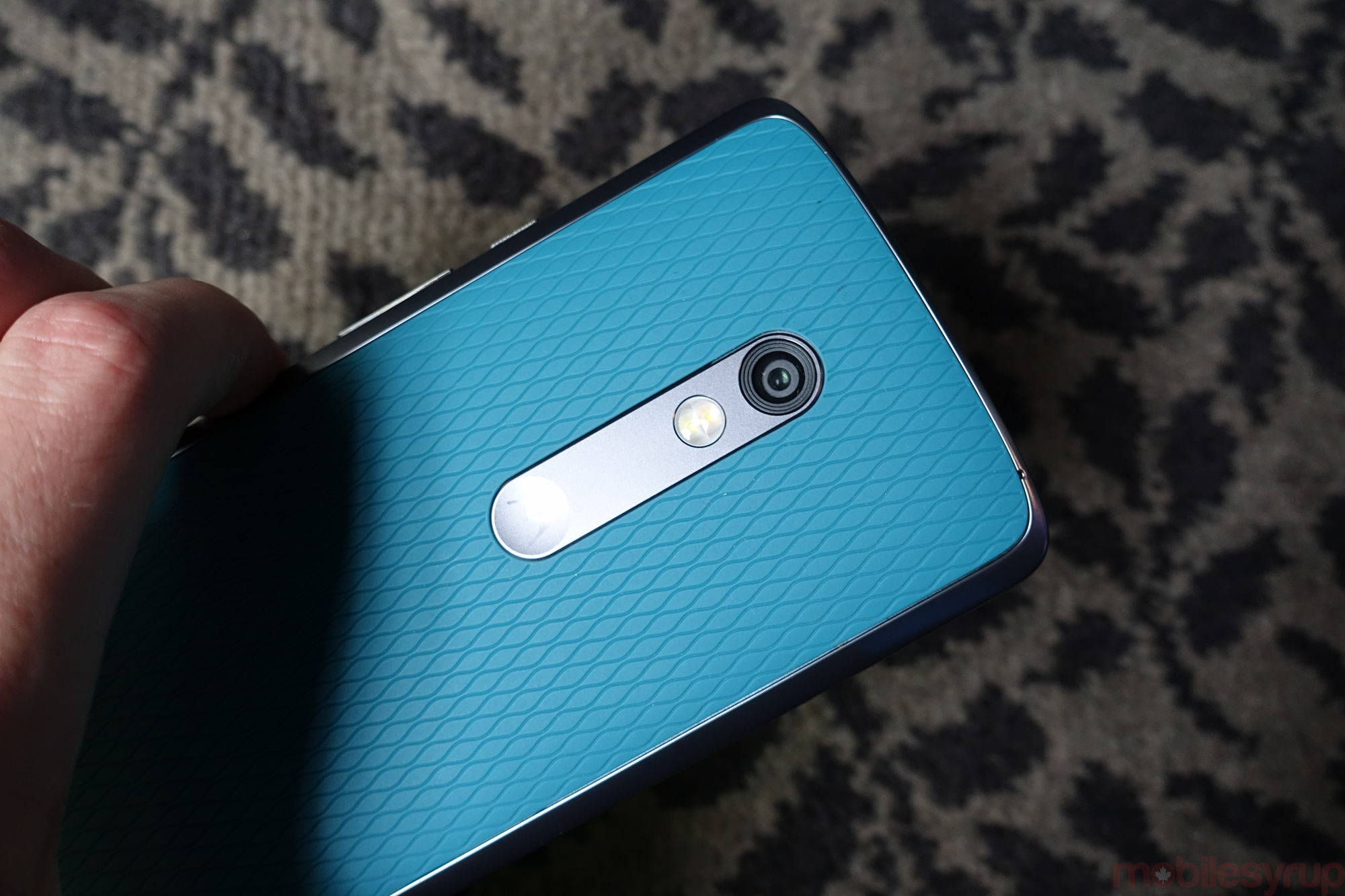
Where the company is promising major improvements is in the camera and battery life, both areas of deficiency in the 2014 Moto X. With a 21MP sensor and F2.0 lens identical to the more expensive Style, the Play lacks only the minutiae of the photo-taking experience, such as Phase Detection Autofocus, that puts it in the same bracket as devices double its price. It also lacks the Style’s wide-angle selfie camera and accompanying front-facing flash, but I demoed the Play’s front camera and it was outstanding, even in low light. My brief tests with the rear camera were also very positive, with superb colour reproduction, minimal grain and low-light results comparable to most flagships.
But it’s the battery that stands out over even the Style. At 3,630mAh, it is the largest cell ever put into a Moto device, and should last two days with moderate usage, according to the company. Like the Verizon-exclusive Droid Maxx line, the new Moto X Play is clearly being positioned as a phone for heavy casual users, and not necessarily those lusting after the most crowded spec sheet.
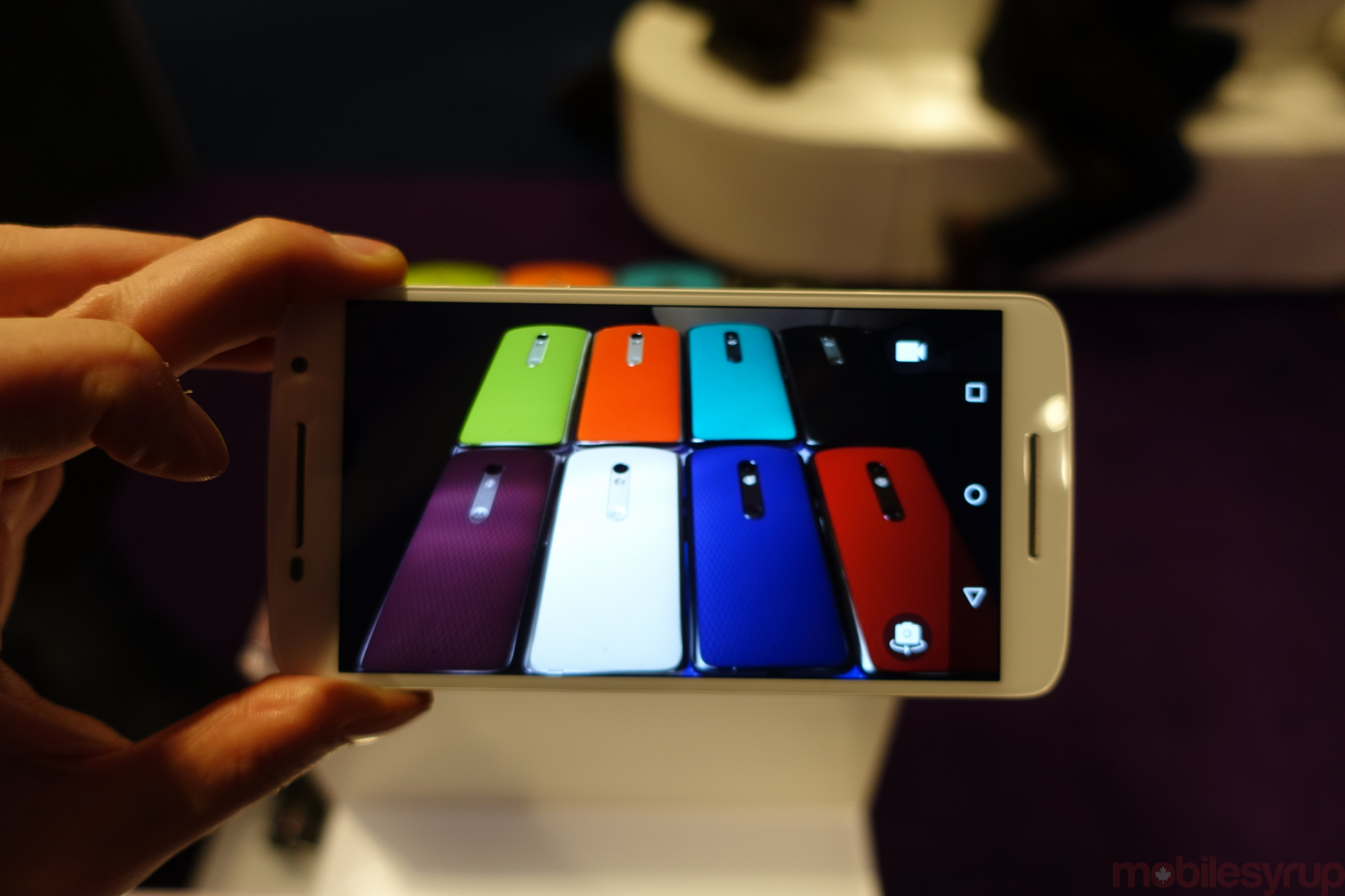
Software
Both new Moto X models offer the same near-stock software experience on top of Android 5.1.1. While Motorola glossed over many of the improvements to Moto Assist, the automation service can now be combined with custom places, rather than just two addresses assigned to ‘Work’ and ‘Home’, for a variety of additional actions.
For example, if you frequent a gym, Moto Assist can be set to read out your incoming texts when the device is connected to a pair of headphones. Or, if you prefer to have different Sleep Mode settings for weekdays and weekends, the new Moto Assist can help with that, too.
The phone also offers a new Smart Camera mode that can automatically detect QR codes, business cards and more, automatically parsing the information into OCR-friendly text.
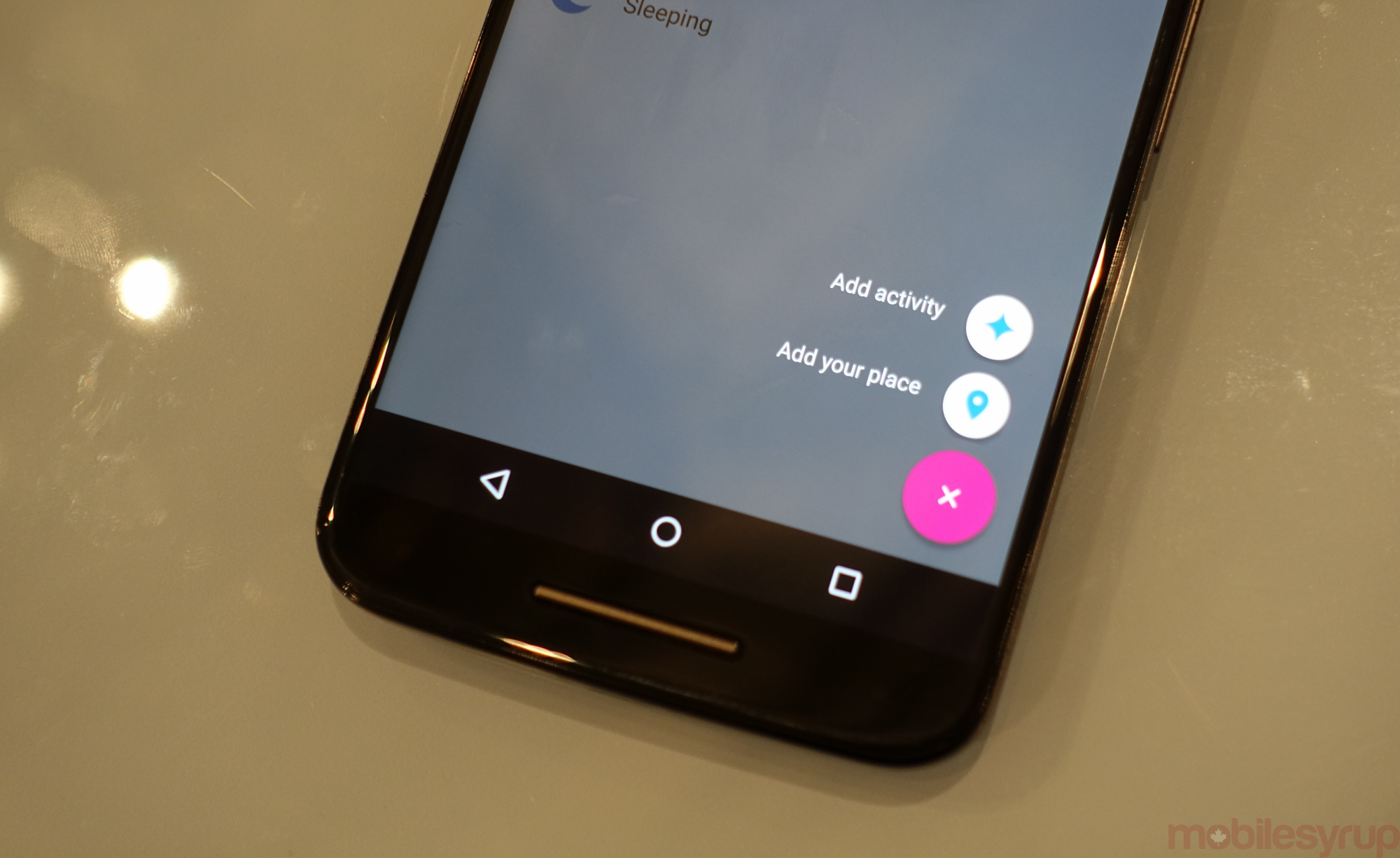
Motorola’s head of marketing, Adrienne Hayes, told me that Motorola only intervenes on the software side when it thinks it can build upon what Google has built, but with Android 5.1 the company is finding fewer and fewer things to tweak. In other words, Google is doing such a good job with Android, Motorola doesn’t feel it needs to change things.
There’s always something refreshing about using a Motorola phone after testing devices from Samsung, LG and HTC. Stock Lollipop is beautiful, and since the release of Android 5.1, considerably more stable than it was when the Nexus 6 was released in November.
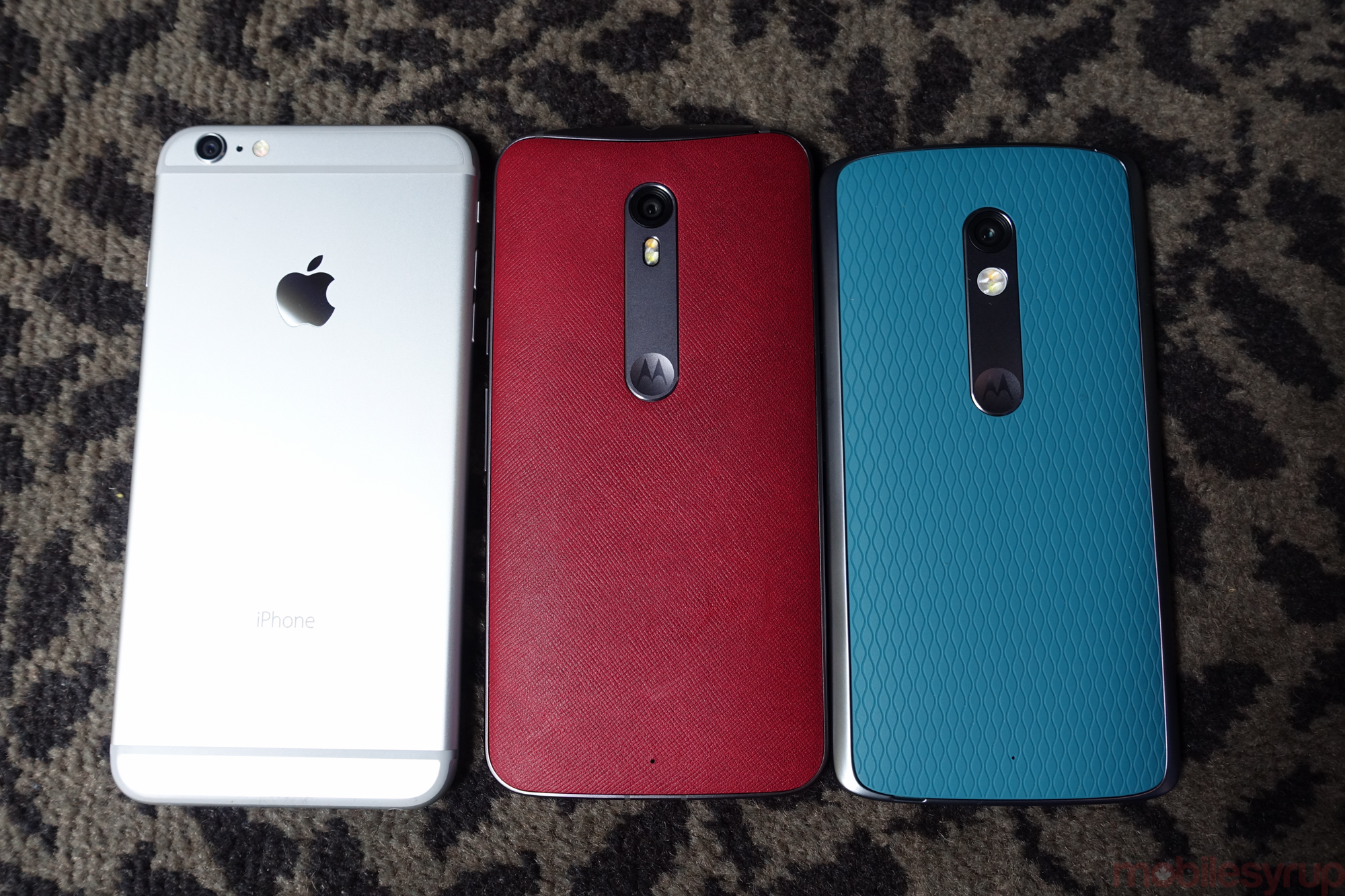
A Place in the World
Since the Moto X Style isn’t coming to Canada, we can only talk about the Play’s place in the market. At $400 outright, and likely between $0 and $50 on contract, the Play places the Moto X line squarely in the mid-range. It is also a logical upgrade from the Moto G, which has been impressing customers all over Canada and the world for two years.

With customizable back covers, the Moto X Play takes more than one page from the Moto G’s playbook. Android users want consistently good performance, strong battery life, capable cameras and software that doesn’t confuse them, and the success of the Moto G has proven that Motorola can own that market.
If viewed as a Moto G Plus and not a Moto X Lite, the Play’s existence begins to make a lot more sense, especially when entrenched in a carrier model where subsidies are the name of the game. A $0 Moto G and a $50 Moto X Play are going to stand nicely next to one another.
MobileSyrup may earn a commission from purchases made via our links, which helps fund the journalism we provide free on our website. These links do not influence our editorial content. Support us here.

